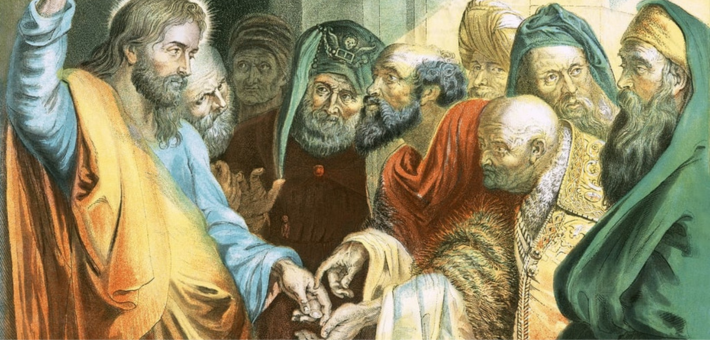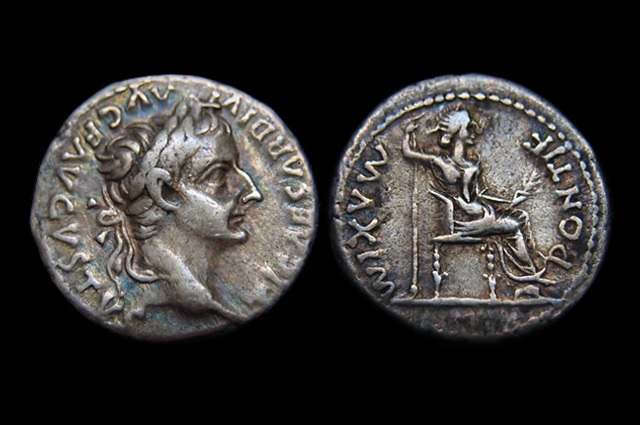Commentary on 1 Thessalonians 1:1-10
For clear and responsible interpretation of a written work, it is important to consider what it is we’re trying to interpret. Those who grew up reading the New Testament may not often think to ask: what does it mean for us to read a letter as Scripture? Admittedly, it may strike us as odd that we would give such close attention to something akin to a very old piece of mail—and here, just part of it—to the extent that we would study it, write commentaries about it, and preach sermons on it for centuries. Yet we can gain significant historical and theological insight from these first ten verses of what we know as 1 Thessalonians. Two points are especially helpful to bear in mind.
First, we should remember that Paul didn’t write 1 Thessalonians with us in mind. He, along with others (verses 1–2), wrote this epistle to inform and encourage an actual community of people in ancient Thessalonica. Second, 1 Thessalonians is not a theological treatise or general instruction manual on Christian living. Paul wrote this letter—quite possibly the earliest of the Pauline letters that we have—to address specific issues that the Thessalonian community faced. To interpret such a writing for our contexts requires that we take some imaginative leaps in order to approximate how the first audience(s) may have understood it, and to discern how the writing might inform contemporary faith and practice.
Like contemporary letters, e-mails, and other forms of written correspondence, ancient letters followed certain forms. Although he included some innovations, Paul knew and generally followed the conventions of ancient letter writing. Scholars largely agree that this epistle begins with a short greeting in 1:1 and progresses to a lengthy thanksgiving (and prayer) that ends at 3:13. When read in the larger literary context of 1 Thessalonians, along with the Acts of the Apostles, 1 Thessalonians 1:1–10 reveals much about the Thessalonians and Paul’s relationship with them. According to Acts, Paul and Silas shared the message of Christ in Thessalonica, with mixed results, after a miraculous release from jail in Philippi (Acts 16:11–17:9; see also 1 Thessalonians 2:2). After departing from Thessalonica, Paul began to worry about their young Christ-believing community—seemingly because they experienced persecution (3:3–4)—but was unable to return to them (2:17–20). He then sent Timothy “to strengthen and encourage” the Thessalonians (3:1–2), and Timothy returned with a positive report about their “faith and love” (3:6–10), which prompted Paul to write the letter.
Because Timothy’s report was reassuring, Paul transitions from his short greeting (1:1) to expressions of gratitude for the community. One of the most notable features of this section is Paul’s emphasis on the power and presence of the living God who has been at work among the Thessalonians. He does not seek to prove that God has indeed acted powerfully in him and the community; he takes it for granted. In fact, the experience of God’s powerful presence serves as a key premise upon which Paul writes his thanksgiving and later exhortations.
Paul remembers them in his prayers, confident that God loves them and has “chosen” their community (1:4). They became believers not by being persuaded by words alone; they experienced in Paul’s missionary work “power in the Holy Spirit and … full conviction” (1:5; see also 2:13). In an allusion to their conversion, Paul contrasts the idols to which they’d previously been devoted with the “living and true God” whom they now serve (1:9). In short, the Thessalonians have become Christ-believers, which involves active devotion to the God who raised Christ from the dead (1:10), not because they made mental assent to a set of teachings that they found persuasive. Rather, according to Paul, their lives were transformed by their experience of the living God.
On the basis of such experience, Paul writes that the Thessalonians became imitators of him, his colleagues, and the Lord (1:6; see also 1:14), as well as examples and messengers for others (1:7–8). Two points about those claims are noteworthy. First, we should not presume that Paul writes of himself as someone to be imitated merely out of arrogance. In his ancient Greco-Roman context, imitation of models—whether of people’s conduct or of their ways of writing—was the basis of education and moral formation. In order to learn how to write, form arguments, and live a good life, people would follow the examples of others who modeled how it should be done. Paul bore the responsibility of providing such a model for the communities he founded in the early Christ movement. Second, we should note the content of what is being imitated. Above all, and as stressed above, the Thessalonians should imitate Paul in his efforts to serve God, in anticipation of Christ’s return from heaven (1:9–10). For a community still being oriented to a reality that differed substantially from their previous worldviews and practices, having models to follow was important to helping them find their way. In turn, their role as examples provided the same for others who had just given themselves to God (1:7)
How might the greeting and thanksgiving of this ancient letter function for those who read it today as sacred Scripture? We can never share the experiences of Paul or first-century Thessalonians, and we miss key insights if we restrict our focus to historical concerns alone. Texts like this point beyond themselves. Of vital importance is that this portion of 1 Thessalonians bears witness to a God who manifests the divine presence in particular ways. Specifically, this God reveals God’s self not only through words, but through “power” (dynamis). Paul experienced that power. The Thessalonians experienced that power. Believers today should likewise remain prayerfully alert to discern the presence and power of God who is already working in and around us. Such is part and parcel of what it means “to serve the living and true God.”



October 22, 2023